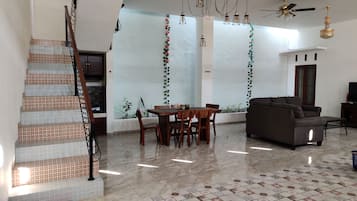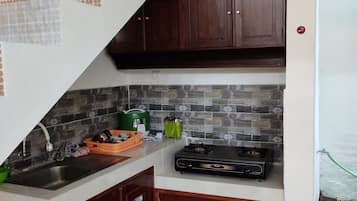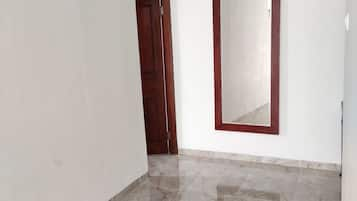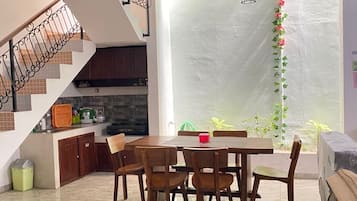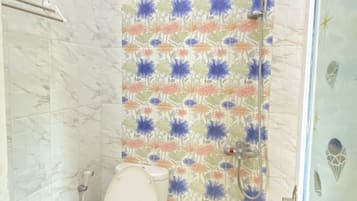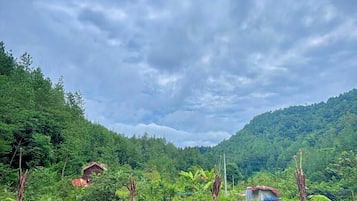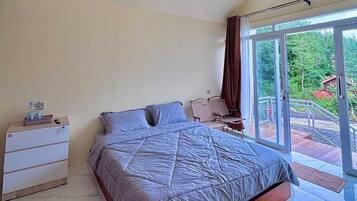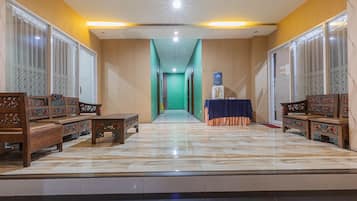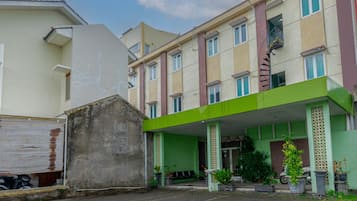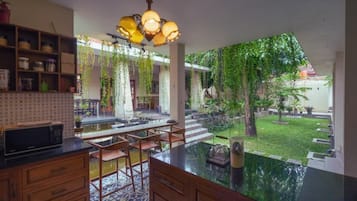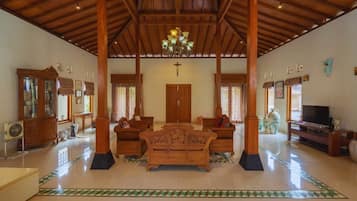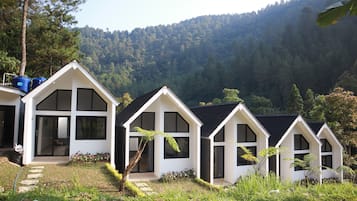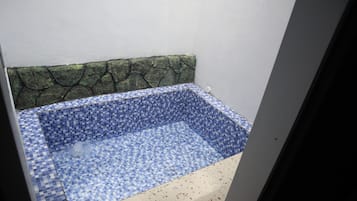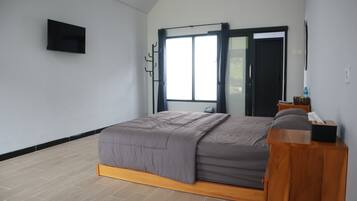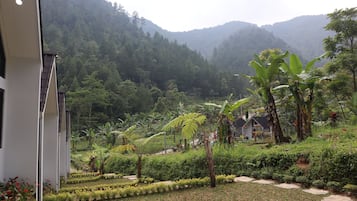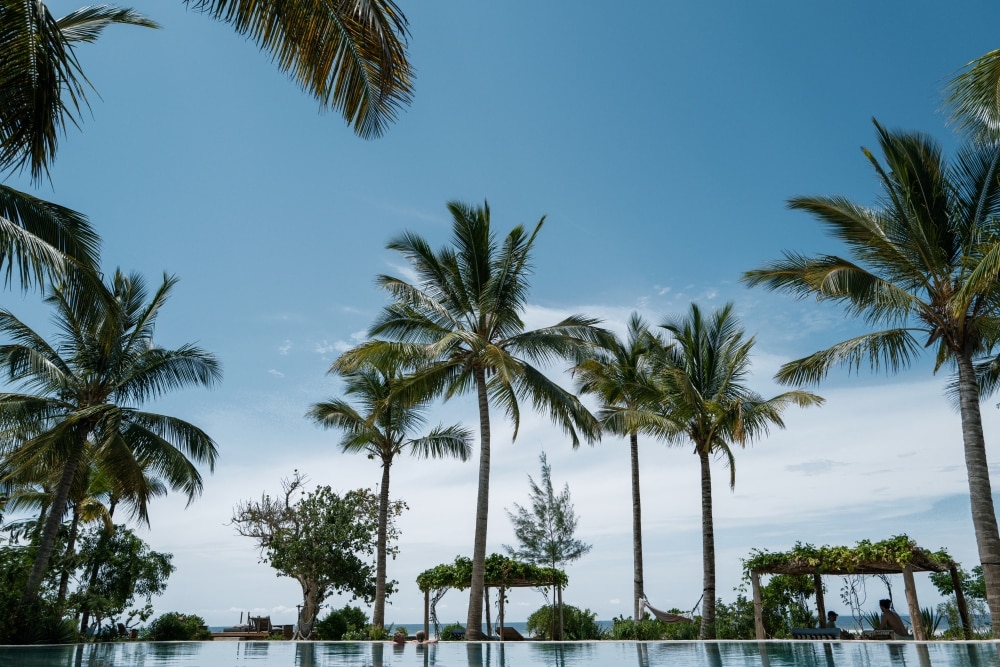수라카르타의 휴가용 주택 임대
- 계획이 변경되어도 안심무료 취소가 가능한 호텔 예약
- 마음에 딱 맞는 옵션약 100만 개의 전 세계 숙박 시설 검색 가능
다음 날짜의 요금 확인
수라카르타의 인기 많은 휴가용 주택
수라카르타의 인기 호텔 이용 후기
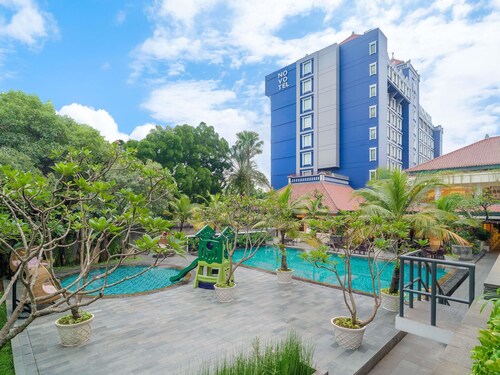
노보텔 솔로
수라카르타에 대해 더 알아보기
수라카르타의 휴가용 주택 임대
취향과 예산, 여행 인원과 목적에 따라 수라카르타의 휴가용 주택을 선택하고 색다르게 여행지를 즐겨보세요.
익스피디아에서 마음에 드는 수라카르타의 휴가용 주택 찾기
익스피디아에서 다양한 종류의 휴가용 주택을 예약할 수 있어요. 호텔 같은 편의성에 내 집 같은 편안함을 더한 아파트식 호텔이나 레지던스, 여행지에서도 익숙한 생활 패턴을 유지할 수 있는 아파트나 콘도에 머물러 보세요. 조금 더 독특한 숙박을 원한다면 코티지, 풀 빌라 등을 이용할 수 있어요. 인근 도시까지 검색의 폭을 넓히면 선택지도 더 다양해질 거예요. 대부분��의 휴가용 주택에는 주방, 식사 공간, 세탁 시설 등 다양한 편의 시설이 있어 장단기 여행은 물론 아이를 동반하는 가족 여행에서도 편안하게 지낼 수 있어요.
수라카르타의 휴가용 주택에서는 보통 다음과 같은 편의 시설과 서비스를 이용할 수 있어요.
- 주방, 냉장고, 쿡탑, 전자레인지
- 조리 도구, 접시
- 세탁기, 에어컨
- 인터넷
- 주차
이 밖에도 픽업 서비스, 정원, 바비큐 그릴, 온수 욕조 등을 갖춘 곳도 있어요. 수라카르타의 휴가용 주택 임대 페이지 맨 아래에서 모든 숙소 유형을 클릭하여 다양한 종류의 숙소를 살펴보고 마음에 드는 곳을 선택할 수 있어요.
수라카르타의 휴가용 주택 요금
익스피디아에서 수라카르타의 휴가용 주택을 1박당 ₩55,926부터 예약할 수 있어요. 휴가용 주택의 요금은 예약 시기, 여행 날짜, 숙소 위치, 숙박 요일 등 다양한 조건에 따라 다르므로 꼼꼼하게 확인하는 게 중요해요. 일찍 예약할수록 저렴한 숙소가 많은 데다 인기 있는 숙소는 생각보다 일찍 마감되므로 원하는 곳을 발견했다면 망설이지 않는 게 좋아요. 익스피디아에서 편리하고 저렴하게 예약해 보세요.
수라카르타의 휴가용 주택을 저렴하게 이용하기 좋은 시기
익스피디아에서 휴가용 주택을 예약하고 수라카르타의 매력을 더 가까이에서 느껴보세요. 대부분은 여름 성수기인 휴가철이 지나면 요금이 떨어져 수라카르타의 숙소를 저렴하게 이용할 수 있어요. 휴가 일정을 조금만 조정하면 멋진 숙소를 가장 좋은 요금으로 이용할 수 있죠. 여름 성수기와 연휴, 그리고 연말연시에는 요금이 오��르긴 하지만 시즌만의 특별한 매력 때문에 여전히 인기가 많아요.
수라카르타의 휴가용 주택 검색 팁
익스피디아의 다양한 필터를 이용해 검색 시간은 크게 줄이면서 원하는 위치에 원하는 편의 시설을 갖춘 숙소를 찾을 수 있어요. 아침 식사 포함, 반려동물 동반 가능, 스파, 야외 공간 등의 옵션을 선택하여 마음에 드는 곳만 쏙쏙 골라내 보세요. 지도로 보기 기능도 원하는 숙소를 찾는 데 도움이 될 거예요. 숙소에서 주요 관광지까지 거리를 확인할 수 있어 동선을 고려해 효율적으로 검색할 수 있죠. 다른 여행객들의 의견이 궁금하다면 익스피디아를 통해 휴가용 주택을 예약한 사람들이 남긴 개의 이용 후기도 확인해 보세요. 안심하고 좋은 숙소를 찾을 수 있어요.
수라카르타의 휴가용 주택 예약 및 취소
익스피디아에서는 전액 환불 가능, 지금 예약하고 현장 결제 등 다양한 방식으로 수라카르타의 휴가용 주택을 예약할 수 있어요. 전액 환불이 가능한 일부 숙소는 여행 계획이 변경되어 예약 후 취소하더라도 예약금을 모두 돌려받을 수 있어 안심할 수 있어요. 자세한 내용은 예약 시 안내하는 취소 규정과 고객 지원 페이지에서 확인해 주세요.
익스피디아에서 수라카르타의 휴가용 주택을 예약하면 좋은 이유
익스피디아는 다양한 휴가용 주택을 저렴하게 제공해요. 좋은 숙소를 착한 가격에 예약하면 여행의 즐거움이 훨씬 커지죠. 여기에 친절한 고객 지원과 사용이 편리한 사이트와 앱도 이용할 수 있어요. 높은 해상도의 숙소 사진, 직관적인 메뉴, 심플한 예약 과정은 여행 계획을 한결 수월하게 할 �거예요. 수라카르타의 휴가용 주택을 실제로 이용한 고객들이 남긴 생생한 후기도 안심하고 예약할 수 있게 하죠. 익스피디아는 이용 후기를 꼼꼼하게 검증하기 때문에 원하는 숙소를 믿고 선택할 수 있어요. 가격 비교 사이트에는 표시되지 않는 회원 전용 특가도 있으니 회원가입하고 더 저렴하게 이용해 보세요.
익스피디아와 떠나는 세계 여행
Expedia.co.kr에서 핫한 인기 여행지
- 서울의 휴가용 주택 임대
- 제주도의 휴가용 주택 임대
- 속초의 휴가용 주택 임대
- 안동의 휴가용 주택 임대
- 보성의 휴가용 주택 임대
- 창녕의 휴가용 주택 임대
- 창원의 휴가용 주택 임대
- 춘천의 휴가용 주택 임대
- 대구의 휴가용 주택 임대
- 광주의 휴가용 주택 임대
- 인천의 휴가용 주택 임대
- 장성의 휴가용 주택 임대
- 평창의 휴가용 주택 임대
- 수원의 휴가용 주택 임대
- 통영의 휴가용 주택 임대
- 울산의 휴가용 주택 임대
- 경주의 휴가용 주택 임대
- 강릉의 휴가용 주택 임대
- 부산의 휴가용 주택 임대
- 전주의 휴가용 주택 임대
- 군산의 휴가용 주택 임대
- 남해의 휴가용 주택 임대
- 여수의 휴가용 주택 임대
- 대전의 휴가용 주택 임대
![At the museum no photos are allowed which is really unfortunate as it was well worth the visit and the guided tour is definitely not to be missed. In the museum there are even Batik made from the Dutch era which depicts stories like Little Red Riding Hood and Snow White!
I enjoyed the tour v much and at the end of the tour we were brought to this room where the artisan were working on hand drawn batik.
Below is an excerpt from Wikipedia for anyone interested in learning more about the process of batik making.
Firstly, a cloth is washed, soaked and beaten with a large mallet. Patterns are drawn with pencil and later redrawn using hot wax, usually made from a mixture of paraffin or bees wax, sometimes mixed with plant resins, which functions as a dye-resist. The wax can be applied with a variety of tools. A pen-like instrument called a canting (IPA: [tʃantiŋ], sometimes spelled with old Dutch orthography tjanting) is the most common. A canting is made from a small copper reservoir with a spout on a wooden handle. The reservoir holds the resist which flows through the spout, creating dots and lines as it moves. For larger patterns, a stiff brush may be used. Alternatively, a copper block stamp called a cap (IPA: [tʃap]; old spelling tjap) is used to cover large areas more efficiently.
After the cloth is dry, the resist is removed by scraping or boiling the cloth. The areas treated with resist keep their original color; when the resist is removed the contrast between the dyed and undyed areas forms the pattern. This process is repeated as many times as the number of colors desired.
The most traditional type of batik, called batik tulis (written batik), is drawn using only the canting. The cloth need to be drawn on both sides and dipped in a dye bath three to four times. The whole process may take up to a year; it yields considerably finer patterns than stamped batik.
Source: Wikipedia](https://images.trvl-media.com/place/6224808/26fd1460-c65a-4c1a-9444-7a893e883ac9.jpg?impolicy=fcrop&w=1200&h=500&q=medium)
